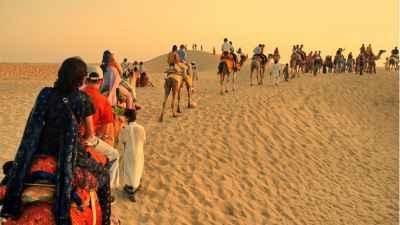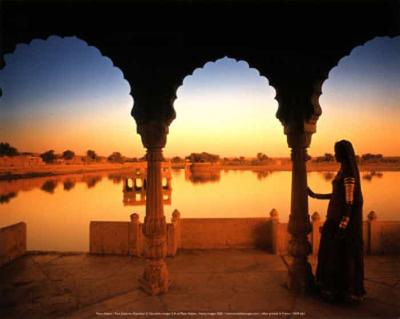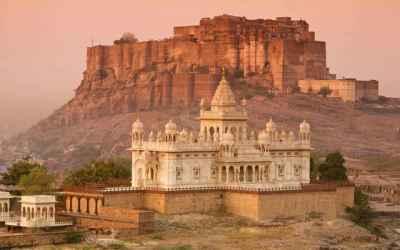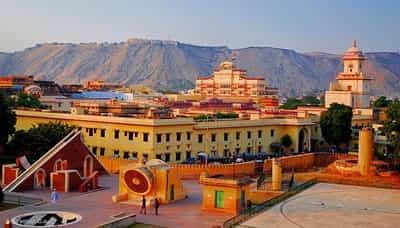Rajasthan's Iconic Stepwells: A Friends Day Out in Ancient Times
Rajasthan, the land of royals and rich cultural heritage, is home to some of the most enchanting architectural marvels. Among these, the stepwells of Rajasthan stand tall as iconic structures, representing the ingenuity of ancient engineers and the spirit of community. These stepwells, known as baoris or bawdis in the local dialect, were not only a key component of water management but also served as important social and cultural hubs. Today, they offer a unique experience for travelers, allowing them to step back in time and immerse themselves in the history and traditions of the region.
What are Stepwells?

Stepwells are architectural structures that were primarily built to provide a reliable and adequate water source in the arid regions of Rajasthan. These multi-level wells were ingeniously designed to collect and store rainwater during the monsoon season, ensuring a year-round supply of water. The step-like structure allowed easy access to the water at different levels, with each step serving as a resting place.
Stepwells were not just functional structures; they were also an integral part of the social and cultural fabric of the communities surrounding them. They provided a space for people to meet, exchange ideas, and celebrate festivals. The elaborate designs and intricate carvings found in many stepwells showcased the artistic skills of the craftsmen of that era.
Exploring Stepwells in Rajasthan
Rajasthan boasts of numerous stepwells, each with its own unique architectural style and historical significance. Here are some iconic stepwells you must visit during your trip to Rajasthan:
1. Chand Baori, Abhaneri:
Located in the village of Abhaneri, Chand Baori is one of the most famous stepwells in Rajasthan. Built in the 9th century by King Chanda of the Nikumbha Dynasty, it is an architectural masterpiece with 3,500 perfectly symmetrical steps arranged in a rectangular shape. The stepwell is surrounded by beautifully carved pillars and galleries, making it a photographer's paradise.
2. Panna Meena Ka Kund, Jaipur:
Panna Meena Ka Kund is a hidden gem located in the Amer region of Jaipur. This stepwell is known for its unique geometrical design and stunning architecture. The symmetrical steps and intricate carvings make it a favorite spot for photography enthusiasts. It is believed that this stepwell was used as a secret meeting place for the royal families.
3. Rani Ki Vav, Patan:
Although not technically in Rajasthan, Rani Ki Vav is worth mentioning as it is one of the most elaborate and well-preserved stepwells in India. Located in Patan, Gujarat, this UNESCO World Heritage Site was built in the 11th century by Queen Udayamati in memory of her husband King Bhimdev I. The stepwell is adorned with intricately carved sculptures depicting mythological characters, making it a treasure trove for history and art lovers.
4. Toorji Ka Jhalra, Jodhpur:
Toorji Ka Jhalra, also known as Toorji's Stepwell, is a mesmerizing structure located in the heart of Jodhpur. Built in the 6th century, this stepwell was designed to provide water for the nearby communities. Today, it has been beautifully restored and is a popular spot for locals and tourists alike to relax and enjoy the serenity of the place.
These are just a few examples of the many remarkable stepwells scattered across Rajasthan. Each stepwell has its own story to tell, giving visitors a glimpse into the past and showcasing the architectural brilliance of ancient times.
A Friends Day Out in Ancient Times
Visiting the stepwells of Rajasthan is not just about witnessing architectural wonders; it is also an opportunity to experience the lifestyle of ancient times. Imagine spending a day with your friends, exploring these historic sites, and immersing yourself in the rich culture of the past.
Start your day early and head to Abhaneri to admire the grandeur of Chand Baori. As you descend the steps of this architectural marvel, take a moment to imagine the conversations and gatherings that took place here centuries ago. Capture the intricate carvings and symmetrical design in your photographs.
After Chand Baori, make your way to Jaipur to explore Panna Meena Ka Kund. Marvel at the geometric patterns and enjoy the tranquil atmosphere of this hidden gem. Spend some time sitting on the steps, soaking in the history and tranquility of the place.
As the day progresses, travel to Jodhpur and visit Toorji Ka Jhalra. Relax by the stepwell, find a spot to sit, and engage in conversations with your friends. The soothing sound of water and the peaceful ambiance will transport you back in time, giving you a glimpse of how people of ancient times bonded and socialized at these water gathering spots.
If time permits, consider a visit to Rani Ki Vav in Patan, Gujarat. Although it is outside Rajasthan, the journey is worth it to witness the grandeur of this UNESCO World Heritage Site. Marvel at the intricate carvings and unique structure, capturing memories that will last a lifetime.
Conclusion
Visiting the stepwells of Rajasthan is like stepping back in time, allowing us to appreciate the ingenuity of ancient architects and the importance of water management in arid regions. These architectural wonders not only served a practical purpose but also acted as social and cultural hubs, bringing people together. Exploring the stepwells is a fascinating experience that transports us to the ancient times of Rajasthan, where water was cherished, and communities thrived around these magnificent structures.
So, gather your friends, embark on this journey, and create memories that will last a lifetime. Share this blog post with your friends and plan your next adventure to the iconic stepwells of Rajasthan!
Disclaimer : The information provided in this blog is for general informational purposes only. While we strive to keep the content accurate and updated, TravelSetu assumes no liability for errors or omissions. If you believe any part of this blog infringes your rights or causes concern, please notify us immediately at info[at]travelsetu[dot]com so that appropriate action can be taken.







